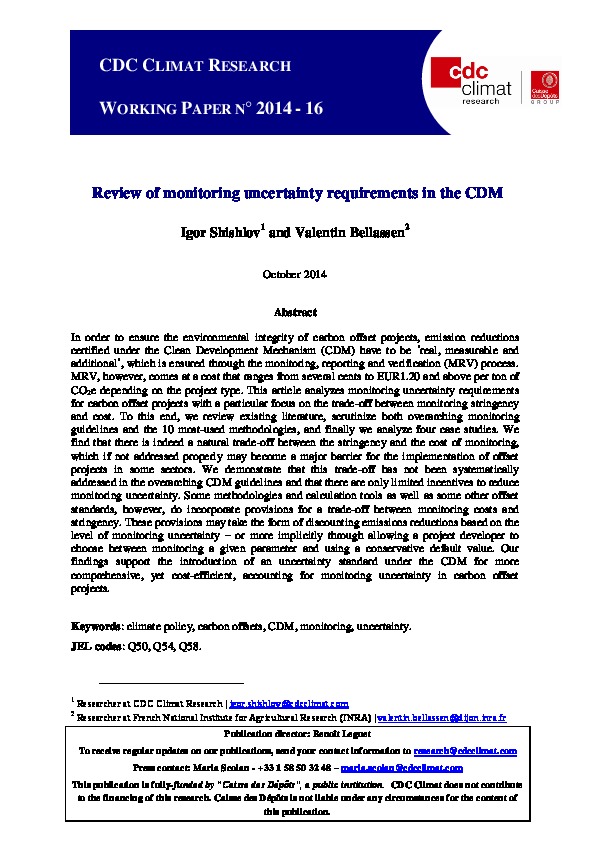Review of monitoring uncertainty requirements in the CDM
By Igor Shishlov and Valentin Bellassen
In order to ensure the environmental integrity of carbon offset projects, emission reductions certified under the Clean Development Mechanism (CDM) have to be ‘real, measurable and additional’, which is ensured through the monitoring, reporting and verification (MRV) process. MRV, however, comes at a cost that ranges from several cents to EUR1.20 and above per ton of CO2e depending on the project type. This article analyzes monitoring uncertainty requirements for carbon offset projects with a particular focus on the trade-off between monitoring stringency and cost. To this end, we review existing literature, scrutinize both overarching monitoring guidelines and the 10 most-used methodologies, and finally we analyze four case studies. We find that there is indeed a natural trade-off between the stringency and the cost of monitoring, which if not addressed properly may become a major barrier for the implementation of offset projects in some sectors. We demonstrate that this trade-off has not been systematically addressed in the overarching CDM guidelines and that there are only limited incentives to reduce monitoring uncertainty. Some methodologies and calculation tools as well as some other offset standards, however, do incorporate provisions for a trade-off between monitoring costs and stringency. These provisions may take the form of discounting emissions reductions based on the level of monitoring uncertainty – or more implicitly through allowing a project developer to choose between monitoring a given parameter and using a conservative default value. Our findings support the introduction of an uncertainty standard under the CDM for more comprehensive, yet cost-efficient, accounting for monitoring uncertainty in carbon offset projects.
